Home> Technical Articles> The Compensator Valve Operation Explained
- AddressNo.1875 East Changjiang Road, New District, Wuxi, Jiangsu,China
- Factory AddressNo.1875 East Changjiang Road, New District, Wuxi, Jiangsu, China
- Worktime9:00-18:00
- Phone(Working Time)86-510-85310167
Compensator valves play a critical role in regulating fluid flow and pressure in hydraulic systems. These valves are designed to prevent system overload and pressure fluctuations while stabilizing fluid flow and pressure. Understanding the importance of compensator valves in hydraulic systems is crucial for maintaining their efficient and reliable operation.
A compensator valve is a hydraulic component that regulates fluid flow and pressure by adjusting the valve's opening or closing in response to changes in pressure or flow. The valve achieves this by using a spool that moves back and forth within a valve body to control the flow of fluid through the valve. The spool is typically actuated by a spring and a pilot valve that sense changes in pressure or flow and adjust the spool position accordingly.
Without a compensator valve, hydraulic systems would be prone to fluctuations in pressure and flow, which can cause system overload and damage to the system components. Compensator valves play a critical role in maintaining system stability and efficiency by adjusting the flow of fluid in response to changes in system conditions.
In the following sections, we will explore the types of compensator valves commonly used in hydraulic systems, their operation principles, and how to maintain and troubleshoot them effectively.
The Purpose of a Compensator Valve:
Compensator valves serve several critical purposes in hydraulic systems, including:
-
Preventing system overload and pressure fluctuations: Compensator valves regulate fluid flow and pressure to prevent system overload and pressure fluctuations that can cause damage to system components.
-
Stabilizing fluid flow and pressure: Compensator valves stabilize fluid flow and pressure to ensure that the hydraulic system operates efficiently and reliably.
-
Reducing energy consumption and heat generation in the hydraulic system: Compensator valves adjust the flow of fluid to reduce energy consumption and heat generation, improving system efficiency and reducing wear and tear on system components.
By regulating fluid flow and pressure, compensator valves ensure that hydraulic systems operate smoothly and efficiently, reducing the risk of system failure and damage to components. It is essential to understand the different types of compensator valves and their operation principles to select the most suitable valve for a specific hydraulic system.

Types of Compensator Valves:
There are several types of compensator valves commonly used in hydraulic systems, including:
-
Pressure-compensated valves: These valves adjust the flow of fluid in response to changes in pressure to maintain a constant pressure level in the system. Pressure-compensated valves are suitable for systems where pressure changes significantly, such as in mobile equipment applications.
-
Flow-compensated valves: These valves adjust the flow of fluid in response to changes in flow to maintain a constant flow rate in the system. Flow-compensated valves are suitable for systems where flow rate changes significantly, such as in agricultural and forestry applications.
-
Load-sensing valves: These valves adjust the flow of fluid in response to changes in load to maintain a constant pressure level in the system. Load-sensing valves are suitable for systems that require precise pressure control, such as in construction and material handling applications.
Each type of compensator valve has its unique advantages and is suitable for specific hydraulic system applications. It is crucial to understand the operating principles of each type of valve to select the most appropriate valve for a particular system.
How a Pressure-Compensated Valve Works:
A pressure-compensated valve is designed to maintain a constant pressure level in a hydraulic system, regardless of changes in flow rate. The valve achieves this by adjusting the valve's opening or closing in response to changes in pressure.
The pressure-compensated valve consists of a spool, which moves back and forth within a valve body to control the flow of fluid through the valve. The spool is actuated by a spring and a pilot valve, which senses the system's pressure and adjusts the spool position accordingly.
When the system pressure is lower than the valve's set pressure, the pilot valve opens, allowing fluid to flow into the valve and push the spool to the open position. As the system pressure reaches the valve's set pressure, the pilot valve closes, and the spring pushes the spool back to the closed position, reducing the flow of fluid through the valve.
The pressure-compensated valve's operation ensures that the system's pressure remains constant regardless of changes in flow rate, preventing system overload and damage to system components. These valves are commonly used in mobile equipment applications, where the system pressure changes significantly due to changes in load and operating conditions.
How a Flow-Compensated Valve Works:
A flow-compensated valve is designed to maintain a constant flow rate in a hydraulic system, regardless of changes in pressure. The valve achieves this by adjusting the valve's opening or closing in response to changes in flow.
The flow-compensated valve consists of a spool, which moves back and forth within a valve body to control the flow of fluid through the valve. The spool is actuated by a spring and a pilot valve, which senses the system's flow rate and adjusts the spool position accordingly.
When the system flow rate is higher than the valve's set flow rate, the pilot valve opens, allowing fluid to flow into the valve and push the spool to the open position. As the system flow rate reaches the valve's set flow rate, the pilot valve closes, and the spring pushes the spool back to the closed position, reducing the flow of fluid through the valve.
The flow-compensated valve's operation ensures that the system's flow rate remains constant regardless of changes in pressure, preventing system overload and damage to system components. These valves are commonly used in applications where the flow rate changes significantly due to changes in load and operating conditions, such as in agricultural and forestry equipment.

How a Load-Sensing Valve Works:
A load-sensing valve is designed to maintain a constant pressure level in a hydraulic system, regardless of changes in load. The valve achieves this by adjusting the valve's opening or closing in response to changes in load.
The load-sensing valve consists of a spool, which moves back and forth within a valve body to control the flow of fluid through the valve. The spool is actuated by a spring and a pilot valve, which senses the system's load and adjusts the spool position accordingly.
When the system load is higher than the valve's set load, the pilot valve opens, allowing fluid to flow into the valve and push the spool to the open position. As the system load reaches the valve's set load, the pilot valve closes, and the spring pushes the spool back to the closed position, reducing the flow of fluid through the valve.
The load-sensing valve's operation ensures that the system's pressure remains constant regardless of changes in load, preventing system overload and damage to system components. These valves are commonly used in applications that require precise pressure control, such as in material handling and construction equipment.
Maintenance and Troubleshooting of Compensator Valves:
Proper maintenance and troubleshooting of compensator valves are essential to ensure their efficient operation and prevent system failure. Here are some tips for maintaining and troubleshooting compensator valves:
-
Routine maintenance procedures: Regularly inspect and clean the valve to prevent contamination and debris buildup, which can affect valve operation. Check for leaks and damaged seals and replace them as needed.
-
Common problems and solutions: Some common problems with compensator valves include leaks, excessive wear, and damage to seals or internal components. To address these issues, disassemble the valve, inspect the components, and clean or replace any damaged parts.
-
Signs of valve failure and how to address them: Signs of valve failure include pressure fluctuations, system overheating, and sudden loss of fluid flow. If you notice any of these signs, shut down the system immediately, and inspect the valve for damage. Replace the valve if necessary.
Regular maintenance and troubleshooting can help prolong the lifespan of compensator valves and prevent costly repairs or system failure. It is essential to follow the manufacturer's maintenance guidelines and use high-quality replacement parts when needed.
Compensator valves are essential components of hydraulic systems that help regulate fluid flow and pressure to prevent system overload and damage. Pressure-compensated valves maintain constant pressure levels, flow-compensated valves maintain constant flow rates, and load-sensing valves maintain precise pressure control.
Understanding the operating principles of compensator valves and selecting the appropriate valve for a specific hydraulic system is crucial for optimal system performance. Routine maintenance and troubleshooting of compensator valves are also essential to ensure their efficient operation and prevent system failure.
By following proper maintenance procedures and addressing common problems promptly, you can prolong the lifespan of compensator valves and prevent costly repairs or system downtime. Remember to always follow the manufacturer's guidelines and use high-quality replacement parts when needed.
In conclusion, compensator valves play a vital role in maintaining hydraulic system efficiency and preventing system failure. With proper maintenance and troubleshooting, compensator valves can operate efficiently for years, ensuring the smooth operation of hydraulic systems in various applications.


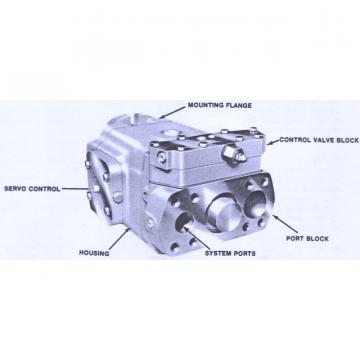 Dansion gold cup piston pump P30P-8L5E-9A4-A00-0B0
Dansion gold cup piston pump P30P-8L5E-9A4-A00-0B0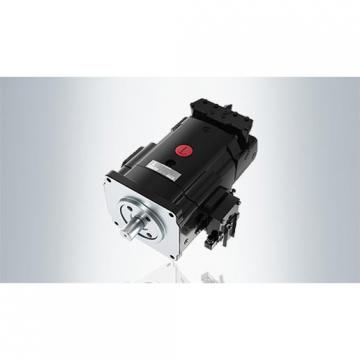 Dansion gold cup piston pump P30P-8L5E-9A2-B00-0C0
Dansion gold cup piston pump P30P-8L5E-9A2-B00-0C0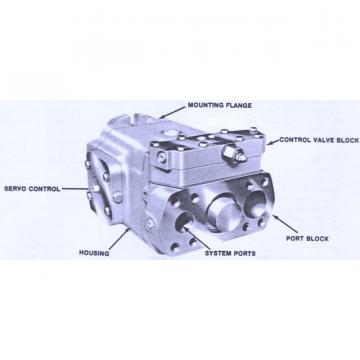 Dansion gold cup piston pump P30L-8L5E-9A7-A0X-B0
Dansion gold cup piston pump P30L-8L5E-9A7-A0X-B0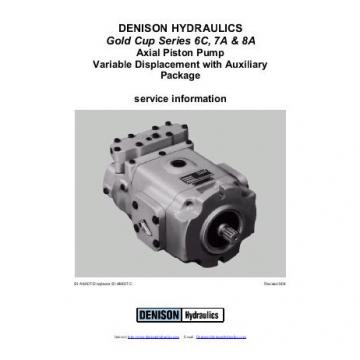 Dansion gold cup piston pump P30P-2R5E-9A7-B00-0C0
Dansion gold cup piston pump P30P-2R5E-9A7-B00-0C0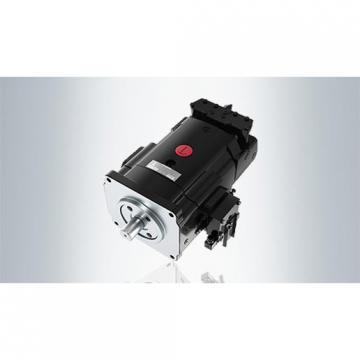 Dansion gold cup piston pump P30L-7R5E-9A2-A0X-D0
Dansion gold cup piston pump P30L-7R5E-9A2-A0X-D0